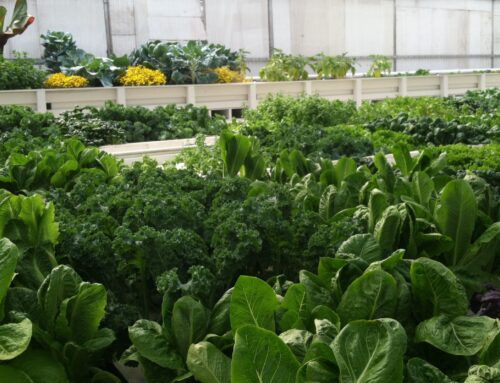Water Temperature in Aquaponics
One of the most important parameters to monitor and maintain in your aquaponics system is a consistent water temperature. This is particularly important for the health of the fish. Fish are considered poikilothermic which means that they are cold blooded and their body temperature is not internally regulated. As a result their internal body temperature is entirely dependent on the surrounding water temperature. Humans are the opposite and are homoeothermic whereby we are able to maintain our own internal body temperature largely independent of the outside air temperature. So think about it from the perspective of humans for a minute. When our body temperature swings just 3 degrees in one direction or the other we are sick and our bodies are stressed. So think about from the perspective of a fish now, if the water temperature is swinging all over the place and not consistent, fish will be stressed. When fish are stressed their eating typically declines and they can become more susceptible to illness. The common notion that your water temperature should not change any more than 3 degrees in a 24 hour period now has a little more background to it. If you remember anything, remember to think like a fish and put yourself in their place. As an aquaponic gardener or farmer, you are entirely responsible for their well being and maintaining a consistent water temperature is one of the key factors in maintaining a healthy population of fish. So how can we do this?
There are a lot of factors that will influence water temperature such as; the capacity and consistency of your heat source, your climate, ambient air temperature, tank materials, exposed piping and length of pipe runs, your growing system, placement of tanks, insulation of components in your system, the total water volume of the system and available backup systems. That’s a lot to think about but all of these factors will ultimately have some influence on your ability to maintain consistent temperature. Ideally we want to minimize our reliance on outside energy sources to not only minimize costs but dependency on systems that we may have little control over. Some of the simplest things to do within this list are to insulate tanks, growbeds and pipes in colder climates so that the water heat is not easily escaping. We often hear people say that they want to bury their tanks in the ground in order to use the ground as additional insulation and thermal mass. That’s all well and good but if you don’t insulate the tank you are more likely going to be fighting the outside ground temperature (in most areas around 55F). Any heat you introduce to a typical water tank will easily escape into the surrounding ground and you’ll be wasting energy and money. If you’re going to bury your tank, make sure you properly insulate underneath and around the tank to decouple it from the ground particularly if you intend to raise warm water fish. Now if you’re going to be raising trout, 55 degrees is a good place to be. On the other side of things, if your air temperature is highly volatile, not only can that be bad on your plants but will likely effect the consistency of your water temperature as well. Insulating and sealing leaks in your greenhouse or whatever structure you are growing in is a good idea to be able to maintain a consistent air temperature. Environmental control systems are also an important part of managing heating and cooling systems in your growing environment and maintaining a consistent air temperature.
There’s much more to go into in regards to heating that we will include in a future post but for now remember the importance of maintaining a consistent water temperature for your fish especially and be sure to know what the proper temperature range is for your given species. There is a great deal of information on fish species and their requirements available by visiting the U.S. Department of Agriculture Regional Aquaculture Center Websites

